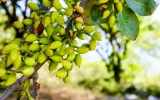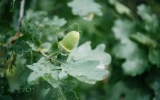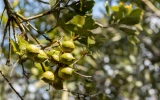Average Pistachio Profit per Acre (2024 Breakdown)
Pistachio production is projected to increase in the coming years, driven by the growing demand for this delicious and nutritious nut. In this article, you'll get a breakdown of the average pistachio profit per acre, taking into consideration various factors such as the number of bearing and non-bearing acres, annual yields per acre, and production projections.
The average pistachio profit per acre ranges from $5,000 to $10,000, depending on location and yield. Well-managed pistachio farms can produce around 1,500 to 3,000 pounds of pistachios per acre, with the market price of pistachios typically ranging between $2 and $4 per pound.
Yield projections for fully mature acres are estimated at 4,300 pounds per acre for on-years and 2,800 pounds for off-years, considering pistachio trees have alternate bearing cycles.
Summary
- Yields and profits can vary significantly depending on factors like weather, pests and diseases, and market prices for pistachios that year.
- In years with high yields and prices, some orchards have seen over $15,000 in profit per acre. But this is presented as exceptional, not average.
- The pistachio industry is set to experience an annual growth rate of 5.1% in total acreage by 2031.
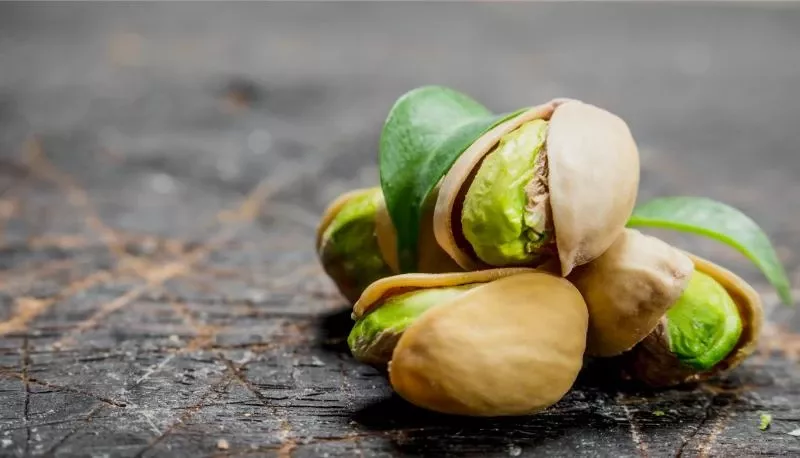
On this page:
Average Profits in 2024
Here's a sample calculation of potential pistachio profit per acre:
| Yield per acre | 3,000 lbs |
|---|---|
| Price per lb | $3.50 (average current market price) |
| Revenue | $10,500 |
| Cost Item | Estimated Cost |
|---|---|
| Orchard maintenance | $2,000 |
| Pest control | $500 |
| Harvesting | $1,500 |
| Drying/processing | $500 |
| Total costs | $4,500 |
| Revenue | $10,500 |
|---|---|
| Total costs | $4,500 |
| Profit per acre | $6,000 |
Therefore, based on this sample calculation with average yields and prices, the potential profit per acre for pistachios would be $6,000.
Calculating profits from pistachio farming
Some of the key costs per acre include initial investment, tree maintenance, and harvesting. Investing in pistachio farming includes factors like:
- Land cost: Purchasing or leasing the land for cultivation.
- Tree planting: The cost of purchasing the pistachio tree saplings, along with planting and initial care.
- Irrigation: Developing a proper irrigation system based on your region's climate and tree requirements.
- Fertilizers and pesticides: Ensuring that the trees get proper nutrition and are protected against diseases and pests.
In addition to these, you need to consider the ongoing costs of farm management, labor, harvesting, and other miscellaneous expenses. You can find detailed cost estimates for pistachio farming from sources like this UC Davis cost study
The cost of land has increased significantly in recent years due to pistachio profitability and new water management policies. In addition to land acquisition, you will need to purchase and plant pistachio trees, set up an irrigation system, and ensure proper care and maintenance.
Here's a rough breakdown of the initial costs:
- Land: $9,500 - $31,000 per acre
- Pistachio trees: $35 - $50 per tree
- Irrigation system: $2,000 - $4,500 per acre
- Other expenses: Soil amendments, fertilization, etc.
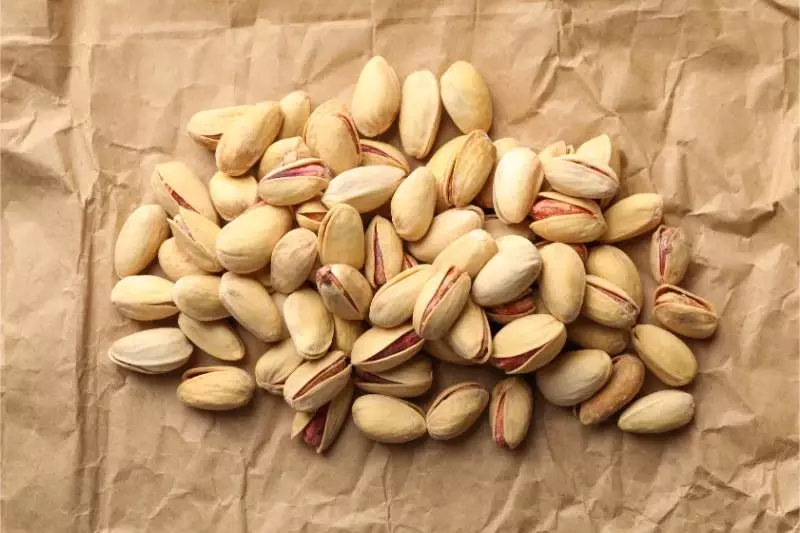
Pistachio production is significantly influenced by crop yield and market pricing:
- Crop yield: Pistachio trees go through on-year and off-year cycles. Based on projections for fully mature trees in 2024, expect yields of 4,300 pounds per acre for on-years and 2,800 pounds for off-years. These yields can vary depending on factors like location, farming practices, and weather.
The best growing zones for pistachio trees are in USDA Hardiness Zones 7-11.
- Market pricing: The market price for pistachios fluctuates based on supply and demand, global trade situations, and other external factors. It's essential to stay informed about the latest market trends and pricing to maximize your profit.
Comparative analysis year over year
Comparing profits year over year will help you get a clearer picture of how your pistachio production is faring. Key aspects to focus on include:
- Yield per acre: Monitor the average yield per acre on a yearly basis. Keep track of how it differs from the previous years and analyze possible reasons for the fluctuations.
- Price per pound: Pay attention to the market price of pistachios and make note of any significant variations. This will directly affect your profit margins.
- Costs and expenses: As with any farming operation, managing costs and expenses is vital for profitability. Focus on areas such as water usage, machinery upkeep, pest control, and labor costs.
- Impact of regulations: Stay updated with new regulations, such as the California Sustainable Groundwater Management Act (SGMA), that might have an impact on your farm's profitability.
Predicted market changes
According to a pistachio production projection report, the average yield of pistachios in 2024 is expected to be around 2,644 pounds per acre. This might lead to fluctuating profits for you as a farmer.
To ensure you remain profitable, it's essential to keep an eye on market trends. Factors such as growing consumer demand, water availability, and changing crop patterns can directly impact your pistachio farm's profits in 2024.
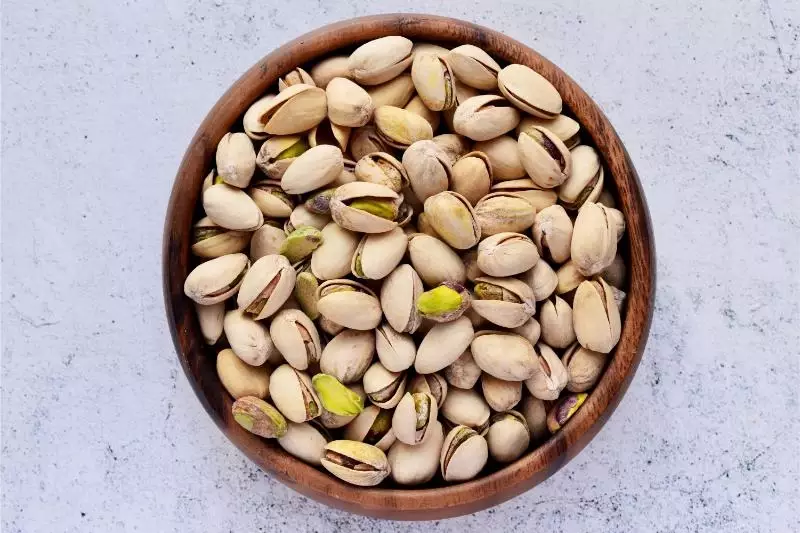
Factors Affecting Profit
Environmental influences
Factors like climate, soil conditions, and water availability can have a significant impact on your farm's health and productivity. Drought periods and harsh winters can stunt tree growth and reduce yield, thus affecting your overall profit.
Pricing factors
The market price of pistachios depends on factors like quality, size, and demand, typically ranging from $2 to $4 per pound. To ensure a good profit margin, it is crucial to pay attention to details such as producing high-quality nuts and keeping up with fluctuating market prices.
Operational efficiency
Efficient farm management includes the use of optimal farm practices, such as irrigation, pest control, and harvest timing. By implementing efficient practices, you can increase the yield per acre, resulting in higher profits. Keep in mind that operational costs, such as labor and equipment, can also affect your bottom line.
Pistachio tree age
Generally, pistachio trees start bearing fruit after about 5-7 years and reach their peak production at around 15-20 years. Understanding the cyclical nature of pistachio production can help you estimate the yield for "on-years" and "off-years," allowing you to plan accordingly and maximize your profits.
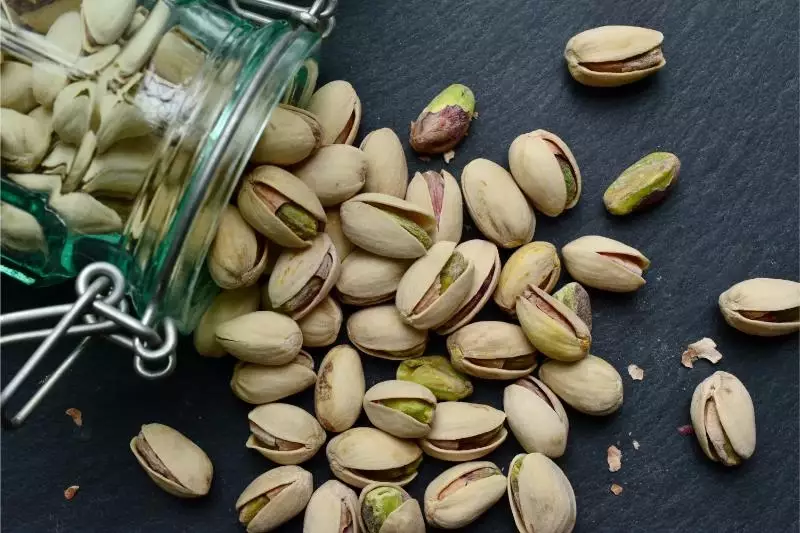
Optimization Strategies
Improving yield per acre
Selecting the right rootstock and tree varieties is essential for better yields. Planting high-density orchards with well-spaced trees can also help improve productivity.
Furthermore, choosing the right irrigation methods, such as drip irrigation or micro-sprinklers, can be beneficial for your pistachio trees' growth and overall health. Lastly, it is important to stay updated on the best cultural practices for successful pistachio farming.
Cost reduction techniques
Effective pest and disease management can save your crop, and ultimately, reduce losses. Implementing an integrated pest management (IPM) system can lower the cost of controlling pests and diseases. Moreover, investing in energy-efficient machinery and equipment will help you save on fuel and energy costs.
Another cost-cutting strategy is sourcing your farm inputs, such as water, fertilizers, and pesticides, in bulk to receive discounts. Regular maintenance of your farming equipment can also prevent costly repairs and improve efficiency.
Marketing and sales optimization
Thorough market research can provide insights into the latest nut trends and demands, helping you plan your production accordingly. Connecting with local, regional, and global markets can offer new sales opportunities. Promote your pistachios on social media and other digital platforms to create brand awareness and attract customers.
Participating in agricultural trade shows and events allows you to network with potential buyers. Additionally, consider offering your pistachios in different forms, such as roasted, salted, or snack-sized packaging, to cater to various consumer preferences. This diversification can eventually lead to higher sales and greater profits.
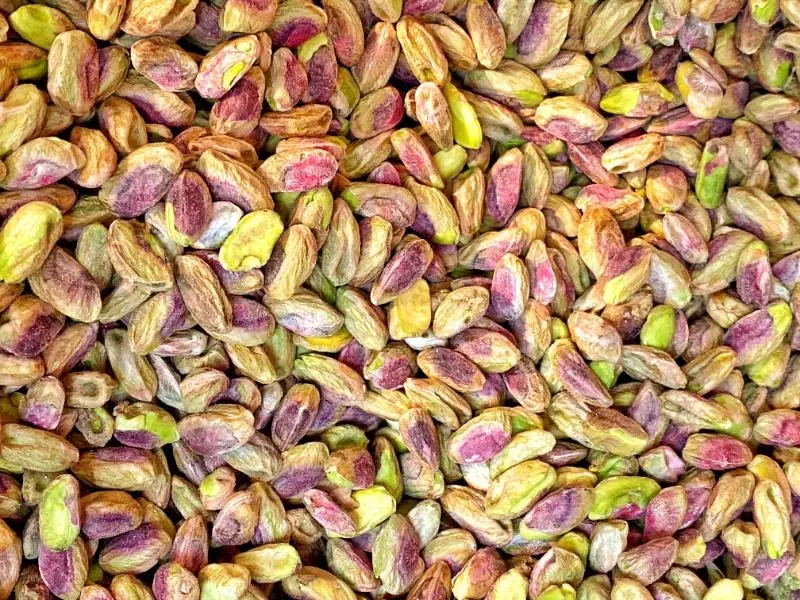
Future of Pistachio Farming
Technological advancements
The pistachio industry is poised for growth with the help of new technology. For instance, the industry is set to experience an annual growth rate of 5.1% in total acreage by 2031. With this expansion, adopting innovative technologies can help improve efficiency and productivity. Some advancements might include:
- Precision agriculture: Using data-driven insights, you can optimize your farming practices and reduce resource waste.
- Drones and remote sensing: These tools can help monitor your pistachio fields, detect issues early, and even assist in targeted pesticide application.
- Robotics and automation: Automating tasks like harvesting, pruning, and sorting can save time and labor costs while maintaining consistency in your operations.
Sustainable farming practices
As a pistachio grower, incorporating environmentally friendly practices into your operations can be beneficial for both the planet and your profits. Some sustainable measures you can adopt include:
- Water conservation: Implementing drip irrigation and scheduling watering based on real-time data will help you use water more efficiently.
- Soil health: Regular soil testing and following practices like crop rotation, cover cropping, and organic matter amendment can improve soil quality and lead to better yields.
- Integrated pest management (IPM): By employing both biological and chemical controls, you can minimize the use of harmful pesticides and promote ecological balance in your orchards.
